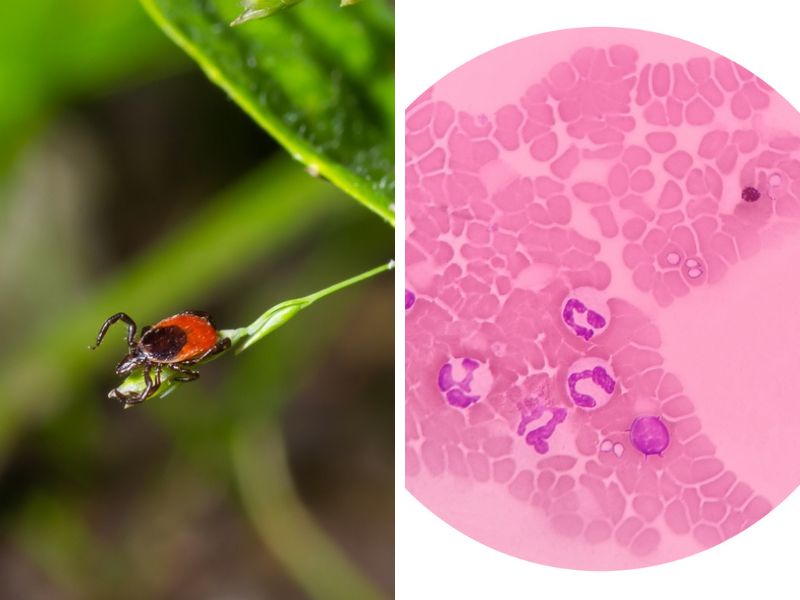Spring means more outdoor time, but ticks love it too. CDC research revealed that ticks could spread babesiosis, a tickborne illness that has doubled in the Northeast over the past few years. With rising temperatures, tick sightings increase, and tick-borne diseases like babesiosis cases have doubled in the Northeast. Learn how to protect yourself and others. Let us guide you.

Image Credit: Shutterstock/olko1975 & Shutterstock/Pee Paew
Babesiosis: What Is It?
Babesiosis is caused by Babesia microti, a parasite transmitted by black-legged ticks or blood transfusion, although this is rare. The parasite infects red blood cells, leading to heart conditions ranging from asymptomatic to life-threatening. Elderly, spleenless, and immunocompromised individuals are at higher risk. Symptoms develop within weeks or months after tick contact.
Is Babesiosis Treatable?
Asymptomatic individuals usually don’t need treatment. Megan Swanson, an epidemiologist, “Medications are available to treat the disease, prescribed by a doctor.” Diagnosis is done by examining blood samples under a microscope, and the presence of Babesia parasites inside red blood cells confirms infection.

Image Credit: Shutterstock/Vitalii Vodolazskyi
Symptoms Of Babesiosis
Babesiosis symptoms include fever, chills, headache, body aches, loss of appetite, nausea, and fatigue. Severe cases can lead to blood clots, organ failure, unstable blood pressure, and death. About 20% of infected adults have no symptoms, while younger people have mild symptoms similar to viral infections. If symptoms are present, seeing a doctor is necessary as moderate and severe cases don’t resolve independently, advises Krause.
Other Tick-Borne Diseases Vs. Babesiosis
Babesiosis is transmitted by Ixodes scapularis ticks, also known as black-legged ticks, which are also responsible for spreading Lyme disease. Ticks initially contract diseases by feeding infected hosts, such as rats, and can then be distributed by biting humans.